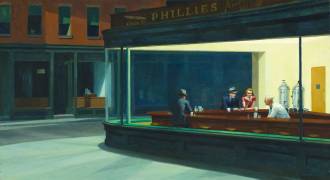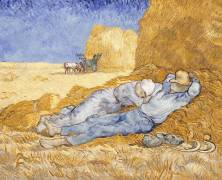Shop art print and framed art The witches' sabbath by Francisco de Goya
Customise
Your art print
The witches' sabbath OF Francisco de Goya
The witches' sabbath
The Witches' Sabbath: Diving into Goya's dark world
The Witches' Sabbath by Francisco de Goya, also known by the Spanish name El Aquelarre, is a work painted in oil on canvas between 1797 and 1798. This modestly sized canvas (43 x 30 cm) is currently housed in the Museo Lázaro Galdiano in Madrid. It is set in a historical context marked by the persistence of popular beliefs and a fascination with the occult, despite the advances of the Enlightenment. The Spanish Inquisition, though less powerful than before, continued to hunt down heresies at this time, and witchcraft remained a source of anxiety and fantasy.
This painting should not be considered in isolation. It is part of a group of six works of the same dimensions, all commissioned by the Duke of Osuna, with whom Goya was close, to decorate his summer residence. These canvases, which explore the theme of witchcraft and the supernatural, testify to the Spanish aristocracy's interest in these subjects, which were both frightening and captivating. Among them are Theft of Witches, The Spell, Witches' Kitchen, The Witches' Kitchen, The Witch and The Witch./em>, The Forcibly Bewitched and the mysterious The Stone Guest, now missing.
Goya's Witches' Sabbath: A macabre and fascinating spectacle
The Witches' Sabbath plunges us into a nocturnal scene, lit by the pale glow of the moon. At the centre of the composition stands an imposing diabolical figure, represented by a goat with red eyes and menacing horns. Surrounding him is a group of witches, their faces distorted by fear and ecstasy. They offer him children as sacrifices, in an atmosphere of trance and debauchery.
The composition of the painting, with its dynamic diagonals and contrasts of light and shadow, creates an impression of movement and chaos. Goya uses a dark colour palette, dominated by blacks, browns and greys, which accentuates the dramatic character of the scene. This aesthetic, described as "terrible sublime", aims to elicit in the viewer a mixture of dread and fascination, characteristic of nascent romanticism.
The devil at the centre of the Witches' Sabbath ceremony.
The central character, the Devil, is depicted in the traditional guise of a goat. His fixed, penetrating gaze seems to hypnotise the witches around him. He embodies the power of darkness, temptation and the transgression of the forbidden. His presence dominates the scene, symbolising the victory of evil over reason and religion.
The witches, for their part, are depicted as hysterical and grotesque beings. Their emaciated bodies, convulsive gestures and grimacing sneers convey their alienation and submission to the devil. They embody madness, deviance and rebellion against the established order.
The Witches' Sabbath is packed with symbols linked to witchcraft and the occult, all elements that hark back to the imaginary world of black magic. The painting plays on ancestral fears linked to witchcraft, while questioning the boundary between the real and the supernatural.
The Witches' Sabbath, a turning point in Goya's art
The Witches' Sabbath marks a turning point in Goya's career. He moved away from courtly painting to explore darker, more subversive themes. This work foreshadows Les Caprices and Les Désastres de la guerre, engravings that bear witness to his political commitment and pessimistic view of humanity.
Beyond the impact on the artist's life, The Witches' Sabbath also paved the way for the expression of the irrational, the fantastic and the macabre in painting. This work inspired many artists, from Delacroix to Picasso, via the Surrealists. Today, it remains a powerful testament to art's ability to explore the darker areas of the human soul and denounce the failings of society.
This artwork is a painting from the modern period. It belongs to the romanticism style.
« The witches' sabbath » is kept at Lazaro Galdiano Museum, Madrid, Spain.
Find the full description of The witches' sabbath by Francisco de Goya on Wikipedia.



































